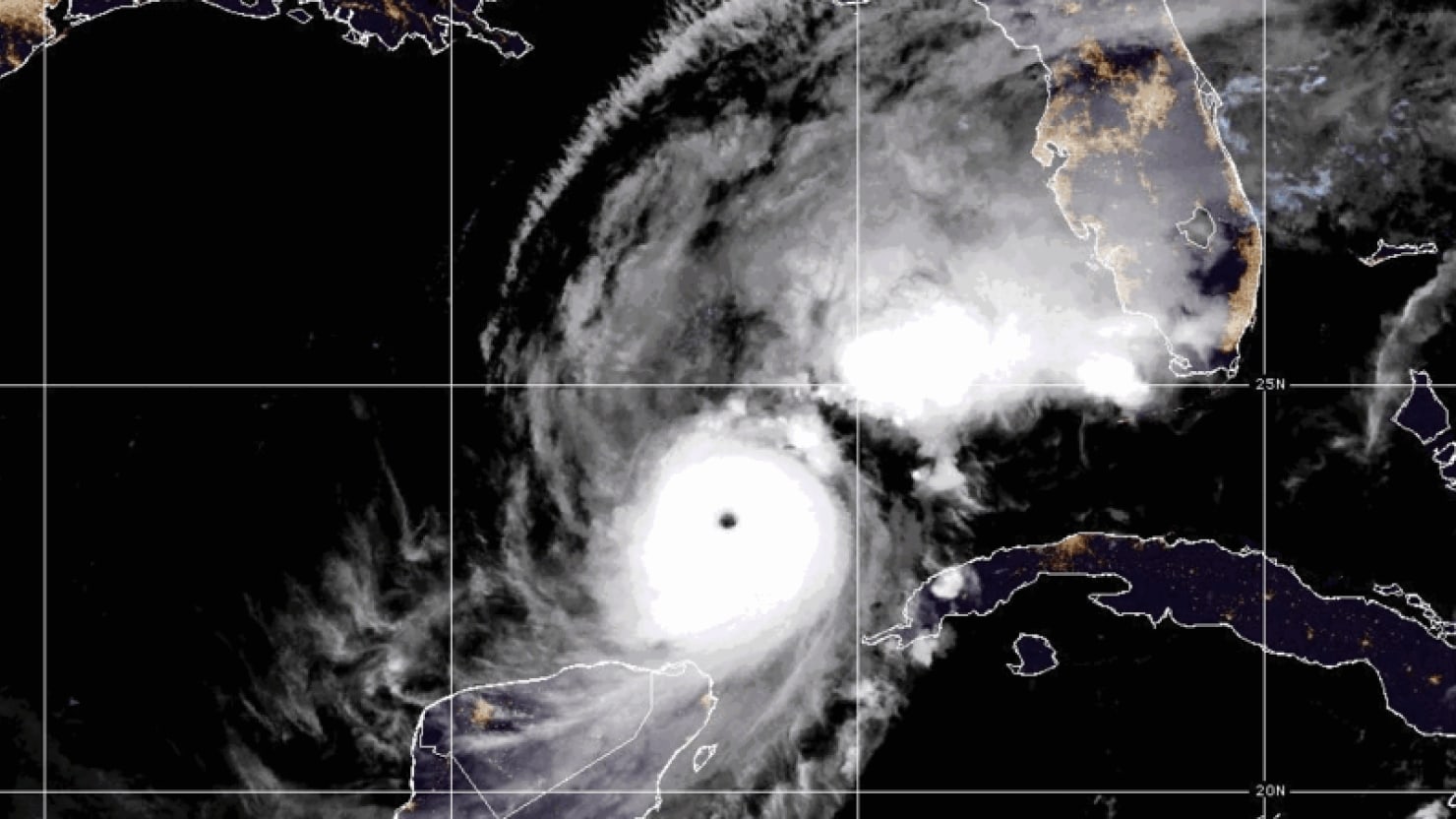Storm surge warnings covered almost the entire west coast of Florida in the early hours of Wednesday morning as “dangerous major hurricane” Milton strengthened on its way to the state, threatening to plunge city districts underwater and violently hurl construction cranes into nearby buildings.
“I can’t stress enough that this is not an ‘if’ event. It’s a ‘when’ event,” Pinellas County Director of Emergency Management Cathie Perkins told a Tuesday evening news conference. “We’re going to get hit, and it’s going to be hard.”

A graphic from the National Hurricane Center shows Hurricane surge warnings for Hurricane Milton stretching up into Georgia.
National Hurricane Center
Milton was a Category 5 hurricane with maximum sustained winds of 160 mph as of 1 a.m. ET on Wednesday, the National Hurricane Center (NHC) said.
The storm—expected to bring dramatic flooding, powerful winds, overwhelming surges and possibly even violent tornadoes—is currently in the Gulf of Mexico moving northeast towards Florida, where it’s expected to make landfall near Tampa and Sarasota as a powerful Category 3 hurricane either Wednesday night or early Thursday.

A satellite image from the National Hurricane Center shows Hurricane Milton as it approaches Florida early Wednesday.
National Hurricane Center
Inundation—that is the water level on normally dry land caused by a storm tide—is expected to be 10 feet or more in some areas, according to the NHC.
Tampa is bracing for a record breaking storm surge that could reach 15 feet, which could breach the temporary AquaFence protecting Tampa General Hospital and flood the major regional health facility. Tampa is considered the most vulnerable U.S. metro area to flooding and could suffer as much as $175 billion in damage from a major storm, according to experts.
Meanwhile, powerful winds of 110 miles per hour or more could rip down towering construction cranes in Tampa and St. Petersburg, sending them crashing into buildings, officials warned.
“We’re looking at the cranes being a potential hazard if we basically get a direct eye impact,” Don Tyre, St. Petersburg’s chief building official, told the Tampa Bay Times. Residents who live near construction cranes have been advised to move or stay in inner rooms without windows.
“If Milton stays on its course this will be the most powerful hurricane to hit Tampa Bay in over 100 years,” said the National Weather Service in Tampa. “No one in the area has ever experienced a hurricane this strong before.”
The combined surge, winds and flooding in the Tampa metro could do major structural damage to buildings, even washing some away, send floodwater miles inland, especially along several creeks that extend miles into shore. Areas may be uninhabitable for weeks or more.
Some 5.5 million have been ordered or urged to evacuate—much of them the coastal, low-lying Tampa metro, home to 3.5 million people—as the NAC warned “there will likely not be enough time to wait to leave on Wednesday” as tropical storm force winds could arrive by the afternoon.

National Oceanic and Atmospheric Administration
As millions flee, essential supplies have begun to dwindle: about 46 percent of gas stations in the Tampa metro area had run out of fuel as of Tuesday evening, according to industry tracker Gasbuddy. In all of Florida, 17 percent of gas stations had exhausted their fuel supply.
While metro Tampa faces the greatest threat, the inland Orlando metro area—home to 2.6 million—could also face dangerous flooding as Milton pours down up to 15 inches of rainfall Wednesday and Thursday. The Flood risk in both metro areas is 70 percent or greater, according to the NHC.

A graphic from the National Hurricane Center shows flash flood risks across Florida over the next three days, with the Tampa and Orlando metro areas at a 70 percent or greater risk.
National Hurricane Center
“At the end of the day, this will be a FLOOD EVENT for a lot of our region starting in the wee hours of Thursday, when the most intense arrives with totals of 10″-19″ in a stripe of intense precipitation along and north of the eyewall,” said Brooks Garner, a meteorologist at Fox 35 Orlando. “As it travels up I-4 in the predawn hours Thursday, through midmorning Thursday, it’ll likely induce flooding which will enter some homes and make travel quite hazardous with some impassable roads. This could rival Hurricane Ian (2022) flooding.”
Meanwhile, the Federal Emergency Management Agency—already stretched to its breaking point by the catastrophic damage Hurricane Helene left across the southeast—is nearly out of staff who could deal with the aftermath of Hurricane Milton.
As of Tuesday, only 1,205 people or about 9 percent of the agency’s disaster workforce were free to respond to Milton or other incidents, according to FEMA’s daily operations briefing.











